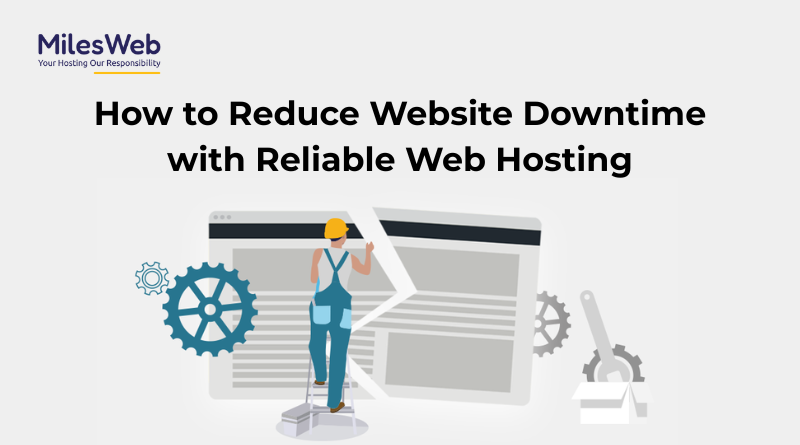How to Reduce Website Downtime with Reliable Web Hosting

Table of Contents
Running an online business means never negotiating on a website’s online presence. However, many website owners neglect the importance of higher uptime and choose low-quality web hosting plans. These plans have less bandwidth, lower server space and no potential for higher uptime. Whether you are looking for web hosting for small business or others, uptime is a crucial factor to consider.
In today’s fast-paced digital world, website downtime can harm your business, affecting user experience, SEO rankings, and revenue. Choosing the best hosting for static website with high uptime guarantees, strong security measures, and responsive support can significantly reduce downtime risks.
But wait! Website downtime is preventable. You just need to be prepared after reading this article. In this guide, we will cover everything from why you must keep your website up and it should be the top priority to what causes downtime and how to prevent it.
Why Prevent Website Downtime?
- A Pingdom study found an average downtime cost across industries is $9000 per minute.
- Small businesses’ downtime costs range between $137 to $427 per minute.
- Larger businesses’ downtime costs reach $16,000 per minute.
How Web Hosts Prevent Downtime?
1. Redundant Infrastructure and Backup Servers
To avoid downtime, the web hosting provider protects its functionality by using redundant infrastructural components such as backup servers and failover systems. Redundant systems will automatically deploy alternative resources in the event of a primary server or resource failure to sustain service without disruption. Load balancing is another technique used by the web hosting provider to distribute traffic relatively evenly across multiple servers to reduce the burden on each server.
The hosting provider will also have backup power capabilities to protect the performance and availability of the operational data centre when unexpected power failures occur—this may include the use of Uninterruptible Power Supplies (UPS) to provide temporary power until backup generators are online.
2. Regular Maintenance and Security Updates
Web hosts conduct regular maintenance and security updates to optimize servers, making them 100% secure. Scheduled maintenance allows providers to update software, patch vulnerabilities, and perform hardware replacements without any unexpected outages. Companies use rolling updates, ensuring servers are updated one at a time while others remain operational.
Security updates are also a vital part of avoiding downtime or degradation in performance due to cyber threats. A cyber attack often results in a Distributed Denial of Service (DDoS), malware infection, or a hack attempt, which can bring a website down and therefore must be resolved. In addition to security updates, hosting providers also use a firewall and Intrusion Detection Systems (IDS).
3. Load Balancing and Traffic Management
Web hosting companies use load balancers across multiple servers, preventing any server downtime. The technique optimizes performance and ensures that high-traffic spikes do not cause downtime. If one server fails, the load balancer redirects traffic to another available server, keeping websites operational.
Additionally, Content Delivery Networks (CDNs) enhance uptime by caching website content and serving it from multiple global locations. CDNs reduce the strain on the origin server and decrease the risk of overload, ensuring smooth performance even during peak traffic hours.
4. 24/7 Monitoring and Rapid Response Teams
Web hosting companies use 24x7 monitoring services that alarm them of performance-related issues before becoming problems. With these features, any website-related issue is get resolved quickly, because it affects the website’s availability.
Reliable web hosts like MilesWeb have a customer support team monitoring server resources 24x7. A server crash, network outage, or bug results in downtime, but the rapid response teams can address those failures to minimize downtime. With engineers around the clock managing and monitoring the systems, web hosts maintain high uptime rates to allow businesses to remain online with minimal issues.
The Bottom Line
With how quickly the digital world moves, downtime can damage your business by causing a poor user experience, hurting SEO rankings, and costing you revenue. Picking a good web hosting provider with high uptime guarantees, strong security, and responsive support can greatly limit your chances of experiencing too much downtime.
Enabling regular monitoring, backups, and performance optimization will also keep your website running smoothly and ramping up to the next level. If you are looking for a hosting provider that can prioritize reliability and uptime guarantee, you should look at MilesWeb. Offering a 99.95% uptime guarantee, solid security, and expert support, MilesWeb helps ensure your website will be online and performing at its best. Don't let downtime derail your dreams—choose a hosting provider that keeps your site up and running!







